Where's Waldo and other hidden critters
Text and photos by Heather Cline
| Several years ago, I posted this same topic about wildlife that have developed the ability to blend in with their environment. This ability to camouflage can aid in survival by escaping predators or being a successful one. Since that post, I have come across more animals that have blended in with their backgrounds and thought it was time for a refresh. Some of these animals blend more than others but all of these present some level of camouflage. If you weren't paying attention, you might walk right by these animals! |
 American Alligator, Everglades National Park American Alligator, Everglades National Park
|
American Alligators are fairly easy to spot when they are on the shore but once they are in the water, they look a lot like logs. Alligators use their camouflage to hunt prey. In addition to having dark brown coloration, alligator eyes and nostrils are located on the top of their heads so they can breath and watch their surroundings while staying submerged.
|
|
American Dipper on Mammoth Hot Springs in Yellowstone National Park. Many species of female birds are more plain looking than their male counterparts. It is thought that because females typically incubate the eggs, the subdued coloring help them to blend in and make them less vulnerable to predators.
Juveniles also tend to have different coloration than their parents. Since fledglings spend much of their time on the ground, the natural camouflage is also helpful to hide from predators.
|
 American Dipper, Mammoth Hot Springs, Yellowstone National Park American Dipper, Mammoth Hot Springs, Yellowstone National Park
|
| Banded Rock Lizards are adept at climbing and can be found climbing the steepest cliffs and rocks with ease. They move between the boulders of the Southern California desert with great speed. The olive green color and thick bands help it to blend in the rocks it calls it home. |
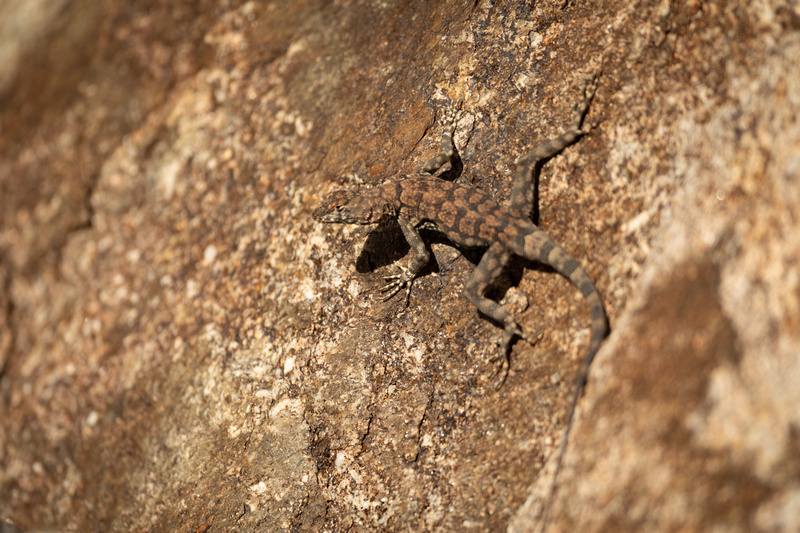 Banded Rock Lizard, Joshua Tree National Park Banded Rock Lizard, Joshua Tree National Park
|
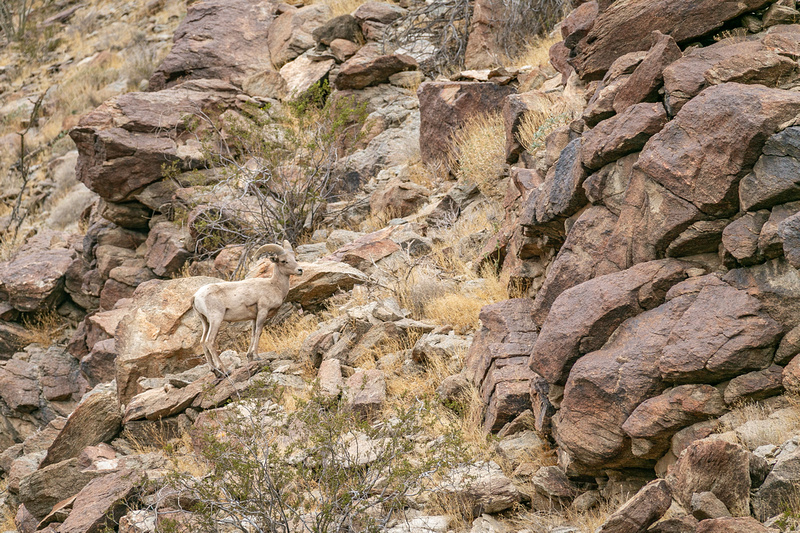 Desert Bighorn Sheep, Anza Borrego State Park Desert Bighorn Sheep, Anza Borrego State Park
|
Bighorn sheep use camouflage, or cryptic coloration, to blend into their environments. Their sandy brown fur disguises their appearance and helps them blend in with the surrounding rocky landscape, making it more difficult for predators to see them.
|
| Much like the Bighorn Sheep, Black Tail deer also blend into their surroundings. Black Tail fawns are born with white spots are scentless. They are often left deep in the brush to keep them safe from predators while the Doe forages for food. |
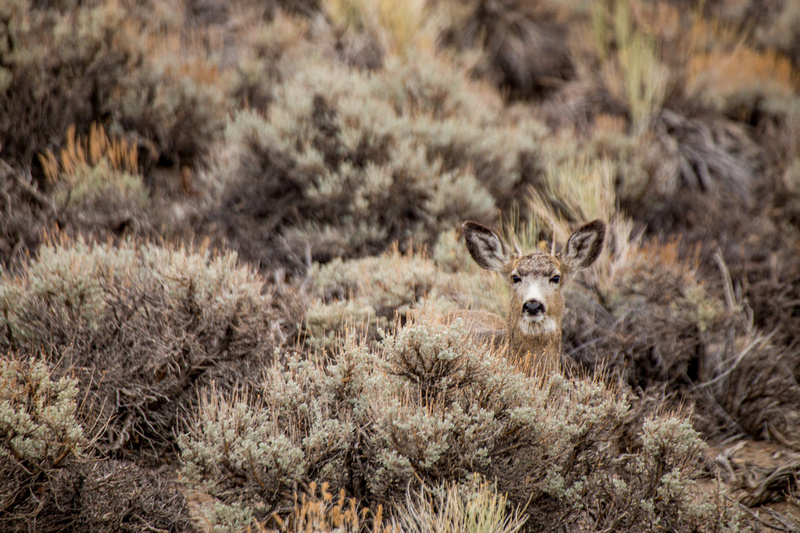 Black Tail Deer, Mammoth California Black Tail Deer, Mammoth California
|
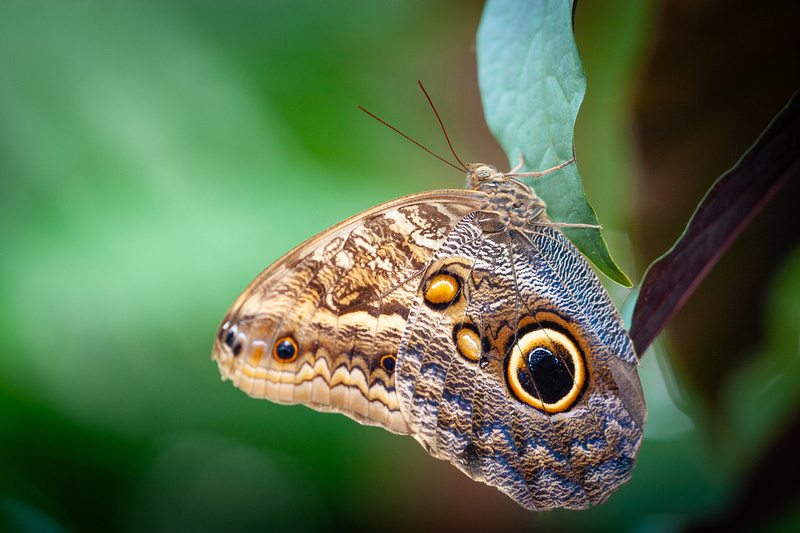 Owl Butterfly Owl Butterfly
|
Owl Butterflies are of the native to the forests of Mexico, Central America, and South America.
The clever markings on the owl butterfly are an adaptation known as Batesian mimicry, which fools predators into thinking they are owl eyes, a predator that many small birds avoid.
|
|
Can you spot this canyon tree frog?
The canyon tree frog has a highly variable pattern and color of cream to brown and irregular bars, blotches, and spots of olive to brown. Its color matches its environment extremely well.
|
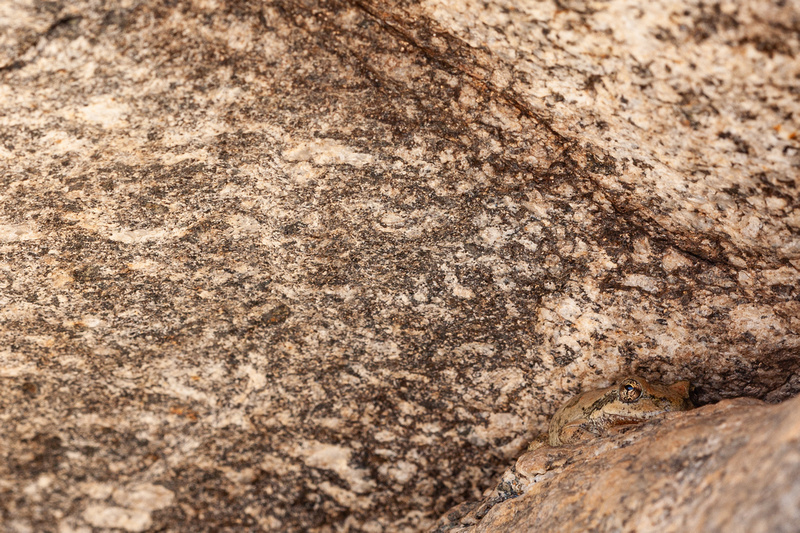 Canyon Tree Frog, Zion National Park Canyon Tree Frog, Zion National Park
|
 Nighthawk resting on rock along the Sacramento River Nighthawk resting on rock along the Sacramento River
|
On summer evenings, Common Nighthawks take to the skies, flying in graceful loops as they chase insects. These birds do not make nest like many other birds. Their young are so well camouflaged that they’re hard to find, and even the adults seem to vanish as soon as they land. |
|
Coyotes use their natural camouflage to blend in with their environment in order to hunt prey and hide from predators.
Coyotes adjust their hunting technique to what foods are available. They hunt small prey alone, usually by stalking then pouncing. If the prey is larger, they will often work together to hunt in small packs.
|
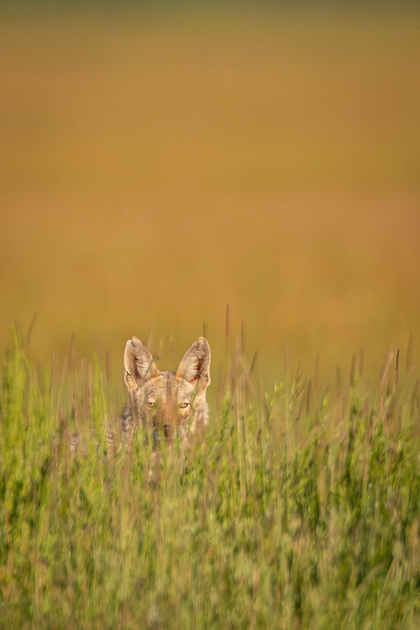 Coyote, Sierra Valley California Coyote, Sierra Valley California
|
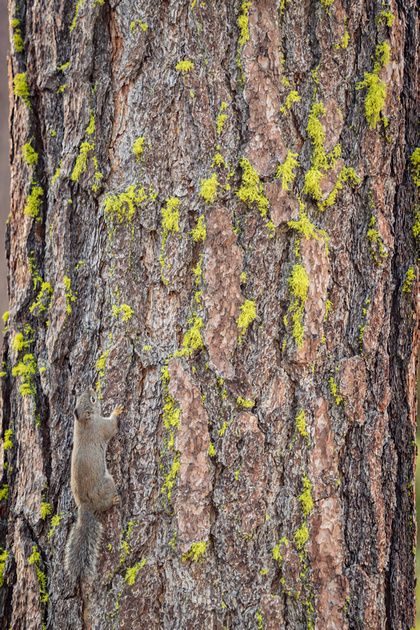 Douglas Squirrel, Lassen National Park Douglas Squirrel, Lassen National Park
|
Squirrels have plenty of natural predators to be concerned about. Common ones include snakes, foxes, coyotes, weasels raccoons, and large predatory birds such as owls, eagles, falcons and hawks.
Squirrels blend in well with their surroundings and like to keep their foraging around trees. A squirrel will move from one side of the tree trunk to the other and keep perfectly still to confuse the predator.
|
| Flatfish are generally passive bottom-dwelling animals that serve a role as predators as well as prey. Flatfish are masters of camouflage. They can mimic the ocean floor and bury themselves in the sand, only allowing their eyes to be seen. |
 Flatfish, Monterey Bay Aquarium Flatfish, Monterey Bay Aquarium
|
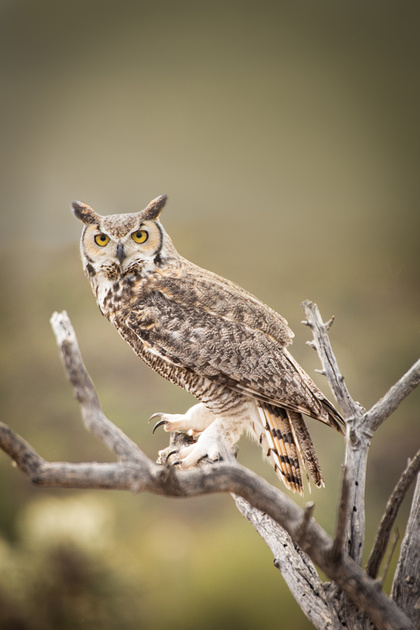 Great Horned Owl, Sonoran desert Great Horned Owl, Sonoran desert
|
Although this Great Horned Owl can easily be seen on this tree snag, once in the trees, they can be virtually undetectable.
Their tufts are specialized feathers that stand up on top of their head and help them camouflage or disguise themselves.
|
|
The leopards spots and their collective pattern helps the leopards to blend in while they move through the grass. Their spots also blends into the dark bark of trees, making is difficult to spot them from below.
Can you spot the leopard sleeping in this tree?
|
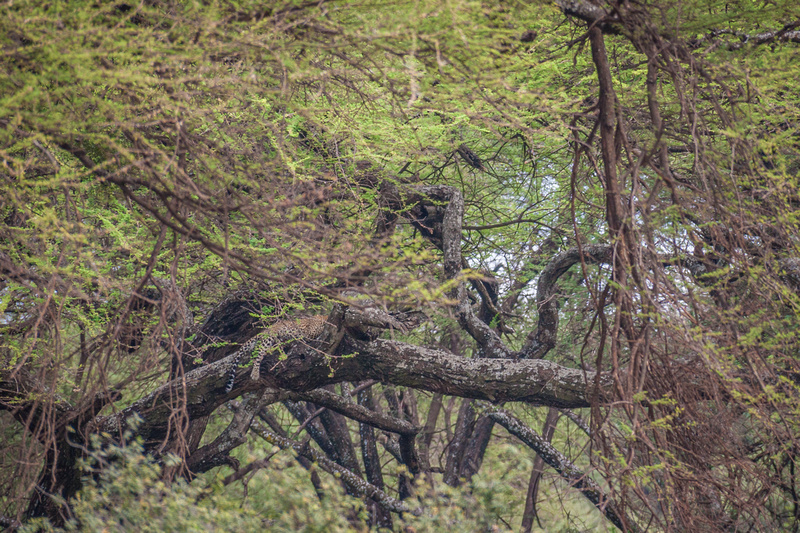 Leopard sleeping in a tree, Tanzania Leopard sleeping in a tree, Tanzania 
|
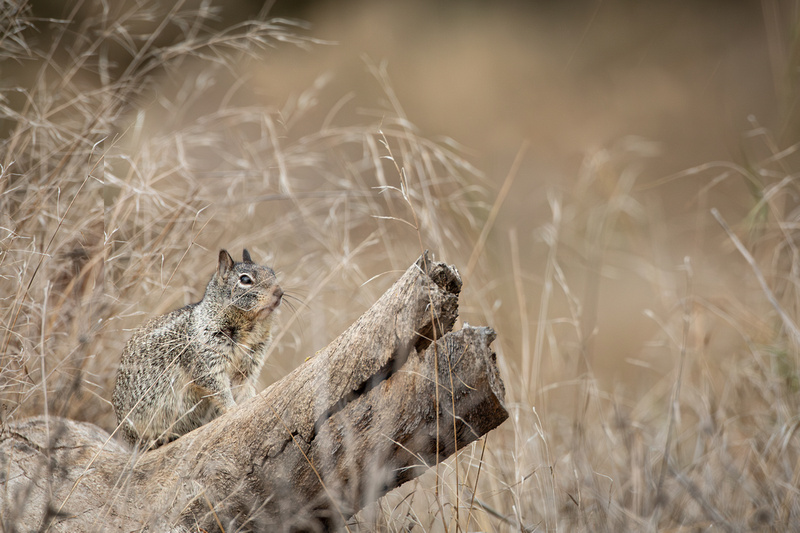 Ground Squirrel, Effie Yeaw Nature Preserve Ground Squirrel, Effie Yeaw Nature Preserve
|
The California ground squirrel's coloration naturally blends in with its surroundings, but this species takes it one step further by rolling in or chewing up the shedded skins of rattlesnakes and applying it to themselves to disguise their scent. |
 Hyrax, Tanzania Hyrax, Tanzania
|
Rock hyraxes are primarily found in rocky outcrops and cliffs in sub-Saharan Africa. They have coarse, dense fur that ranges in color from gray to brown, providing excellent camouflage against their rocky surroundings. |
| Almost every living creature in the African savannah uses camouflage to protect itself or hunt prey. The lion is no exception. Adults use their coloration to hide among the dry grasses and cubs are born with spots that aid in disguising them from would be predators. |
 Lion, Tanzania Lion, Tanzania
|
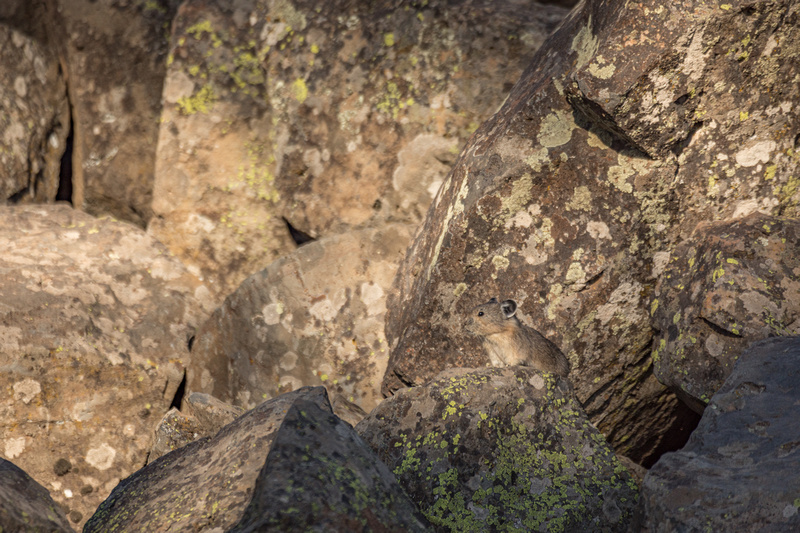 Pika (pronounced Pie-ka), Yellowstone National Park Pika (pronounced Pie-ka), Yellowstone National Park
|
Despite their cute appearance, the American Pika is one of the toughest animals, surviving their entire lives in an alpine terrain. The pika has a brown and black coloration, which is meant to camouflage them among rocks in which they live. |
| The praying mantis can camouflage perfectly into an environment of sticks, bark, leaves and flowers. Mantises can be green, brown or a combination of colors to match their environment. It will molt every few weeks, and can then take on the colors of its natural surroundings. It might even mimic the charred remains of sticks, weeds and grass after a fire. |
 Praying mantis Praying mantis
|
 Red-shouldered hawk, Effie Yeaw Nature Preserve Red-shouldered hawk, Effie Yeaw Nature Preserve
|
Red-shouldered Hawks may be observed perching, although their coloration and the dense vegetation of its preferred habitat help to provide camouflage.
They are most easily observed while hunting, when they drop down from high perches to capture terrestrial prey with their talons.
|
| Even rattlesnakes are susceptible to predation by other animals, such as coyotes, hawks and eagles. They often try to protect themselves by keeping still while trying to blend in with their environment. Rattlesnakes don't only use camouflage to hide from predators, but also to stay low-key when focusing on acquiring prey themselves. |
 Rattlesnake Rattlesnake 
|
I hope you enjoyed this view into the world of animals and their techniques to blend into their environments to help them survive by evading predators or being successful ones!
 American Alligator, Everglades National Park
American Alligator, Everglades National Park
 American Dipper, Mammoth Hot Springs, Yellowstone National Park
American Dipper, Mammoth Hot Springs, Yellowstone National Park
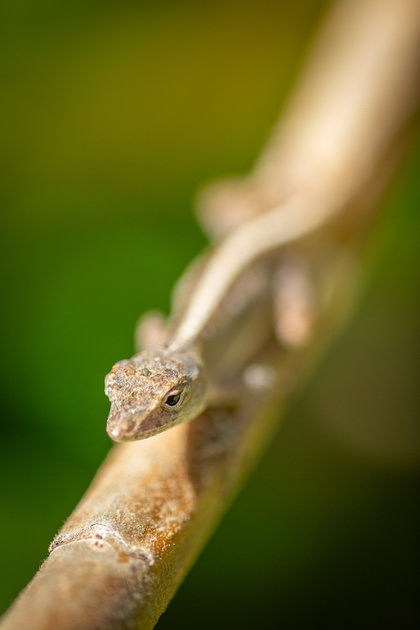 Anole lizard, Kauai Hawaii
Anole lizard, Kauai Hawaii
 Banded Rock Lizard, Joshua Tree National Park
Banded Rock Lizard, Joshua Tree National Park
 Desert Bighorn Sheep, Anza Borrego State Park
Desert Bighorn Sheep, Anza Borrego State Park
 Black Tail Deer, Mammoth California
Black Tail Deer, Mammoth California
 Owl Butterfly
Owl Butterfly
 Canyon Tree Frog, Zion National Park
Canyon Tree Frog, Zion National Park
 Nighthawk resting on rock along the Sacramento River
Nighthawk resting on rock along the Sacramento River
 Coyote, Sierra Valley California
Coyote, Sierra Valley California
 Douglas Squirrel, Lassen National Park
Douglas Squirrel, Lassen National Park
 Flatfish, Monterey Bay Aquarium
Flatfish, Monterey Bay Aquarium
 Great Horned Owl, Sonoran desert
Great Horned Owl, Sonoran desert
 Leopard sleeping in a tree, Tanzania
Leopard sleeping in a tree, Tanzania 
 Ground Squirrel, Effie Yeaw Nature Preserve
Ground Squirrel, Effie Yeaw Nature Preserve
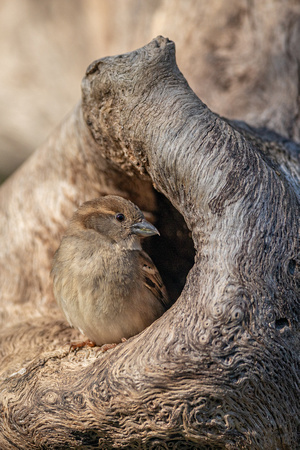 House Sparrow, Folsom California
House Sparrow, Folsom California
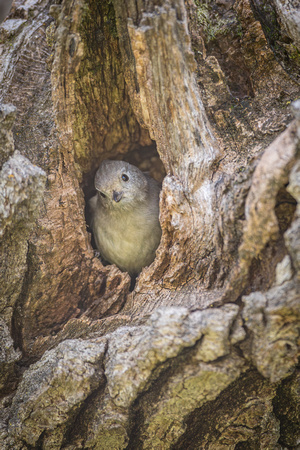 Oak Titmouse, Effie Yeaw Nature Preserve
Oak Titmouse, Effie Yeaw Nature Preserve
 Hyrax, Tanzania
Hyrax, Tanzania
 Lion, Tanzania
Lion, Tanzania
 Pika (pronounced Pie-ka), Yellowstone National Park
Pika (pronounced Pie-ka), Yellowstone National Park
 Praying mantis
Praying mantis
 Red-shouldered hawk, Effie Yeaw Nature Preserve
Red-shouldered hawk, Effie Yeaw Nature Preserve
 Rattlesnake
Rattlesnake 
